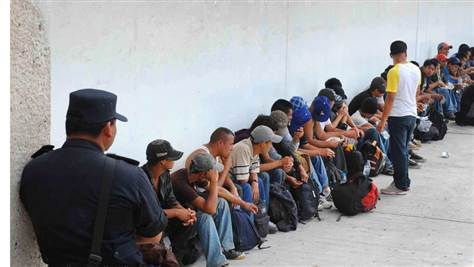A new report by the Organization of American States (OAS) acknowledged the increased threats that migrants face in Mexico, and provided new data on the impunity that criminal organizations enjoy when it comes to court cases involving migrants.
The report, published by the Inter-American Commission on Human Rights, was compiled at the request of the Mexican government. While the topic is not limited to organized crime, in today’s Mexico it’s impossible to examine the threats to migrants without taking into account the role of groups like the Zetas.
Undocumented immigration through Mexico has long depended on “coyotes” or “polleros,” the extralegal guides who promise clients a trip through Mexican terrain and across the US border. These coyotes have by necessity always operated outside the law, but in recent years the incursion of larger criminal groups into the coyote trade has revolutionized the industry.
SEE ALSO: Mexico News and Profiles
Many of the threats facing migrants today are the same that they’ve always faced, robbery and rape being two at the top of the list. But others are reflective of Mexico’s more recent criminal dynamics. The report discusses, for example, the abduction of adolescent immigrants who are forced to serve as foot soldiers in gangs.
The growing role that organized criminal groups play in human smuggling — in place of more independent coyotes — has subsequently increased the scale of these operations, leading to more shocking crimes. One such example cited in the OAS report was the discovery of over five hundred migrants from all over the world squeezed into two tractor trailers, in the southern border state of Chiapas about three years ago. Regular reports of the mass murder of migrants in Tamaulipas state — most of which have been blamed on the Zetas — offers further evidence of this shift.
InSight Crime Analysis
One word that crops up repeatedly throughout the OAS report is “vulnerability.” When considering all of the ways in which organized crime has become more involved in enabling migrant flows, the end result is making migrants more vulnerable.
For instance, the report’s authors discussed the impunity with which the smugglers operate. They noted that “the business” of migration is attractive to criminal organizations, as it offers high returns in exchange for the “small risk” of repercussions.
The numbers the OAS obtained shed further light on the extent of the impunity involving these types of crimes. Between 2008 to 2011, Mexican courts issued decisions in just four homicide cases involving migrants. There was just one decision for an extortion case and just five cases involving human smuggling.
The larger role played by criminal groups in human smuggling has further increased that impunity. Mexico’s organized crime groups have more longstanding ties to police and various levels of government, deeper pockets they can dig into in order to buy off officials, and a greater capacity to intimidate government agents. As a result, there is less governmental support for migrants who are victimized and less disincentive for those who prey on migrants. Thus, the cycle of impunity continues.
Mexico’s criminal groups moved into human smuggling partly to diversify which activities earned them income — the same impetus that drove them to kidnapping, extortion, and various other crimes. The OAS report acknowledged this diversification. It even called migration “one of the main sources of revenue for organized crime in Mexico.”
SEE ALSO: Coverage of Human Smuggling
While that might overstate the case slightly — drug trafficking remains far more lucrative according to most calculations — there is no question that the profits are substantial, and sufficient to support a class of sophisticated and dangerous criminal groups. Groups like the Zetas and the Gulf Cartel (which appear more frequently in the OAS report than any other trafficking gangs) have also learned to take advantage of changes in government policy on both sides of the border. The report noted that these two criminal groups are “taking aim at the migrants deported from the United States,” threatening them with “kidnapping, extortion and other crimes.”
The rise of the massive market for human smuggling in Mexico speaks to the broader issues fueling organized crime: institutional weakness, millions of marginalized youth, and off-the-books economic systems. This suggests that the best way to protect migrants is to also attack the broader factors feeding insecurity. That is, unfortunately, a mammoth undertaking, without any obvious steps that could yield immediate improvements.

